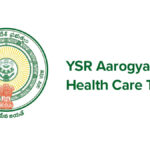Ration cards play a crucial role in India’s public food distribution system. These cards help millions of people access affordable food and other essential items. But with different types of ration cards available, you might wonder which one is best. Let’s explore the various ration card types and their benefits to help you understand which one might be most suitable for your needs.
Types of Ration Cards in India
There are several types of ration cards in India, each designed to help different groups of people. The main types are:
1. Priority Household (PHH) Ration Card
This card is for families who need help but are not the poorest. PHH cardholders can buy 5 kilograms of food grains per family member each month at low prices. The prices are:
- Rice: ₹3 per kilogram
- Wheat: ₹2 per kilogram
- Coarse grains: ₹1 per kilogram
People who can get a PHH card include:
- Transgender individuals
- People with disabilities (more than 40% of body affected)
- Tribal families
- Homeless people
- Families with a widowed pension holder
- People who live on alms
2. Antyodaya Anna Yojana (AAY) Ration Card
The AAY card is for the poorest families in India. It gives the most help. AAY cardholders can buy 35 kilograms of food grains each month at very low prices. They get:
- 20 kilograms of rice at ₹3 per kilogram
- 15 kilograms of wheat at ₹2 per kilogram
People who can get an AAY card include:
- People without a steady income
- Older adults over 65 years
- Daily wage workers, rickshaw drivers, and coolies
3. Non-Priority Household (NPHH) Ration Card
This card is for families who don’t qualify for PHH or AAY cards. NPHH cardholders don’t get food grains, but the card can be used as an ID proof.
4. Above Poverty Line (APL) Ration Card
APL cards are for families whose income is above the poverty line set by the state government. These families can buy 10 to 20 kilograms of food grains per month.
5. Below Poverty Line (BPL) Ration Card
BPL cards are for families whose income is below the poverty line. Like APL cardholders, they can buy 10 to 20 kilograms of food grains per month.
6. Annapurna Yojana (AY) Ration Card
This card is for older adults over 65 years who don’t have a regular income or pension. It helps them get food security.
Which Ration Card is Best?
The best ration card for you depends on your family’s financial situation and needs. Here’s a simple guide:
- If your family is very poor and struggles to afford food, the AAY card offers the most help.
- If your family needs some help but isn’t in extreme poverty, the PHH card could be best.
- If your family’s income is just above the poverty line, an APL card might be suitable.
- If your family’s income is below the poverty line, a BPL card could help.
- If you’re over 65 and don’t have a regular income, the AY card could be right for you.
- If you don’t qualify for food subsidies but need an ID proof, the NPHH card can be useful.
Benefits of Ration Cards
Ration cards offer more than just access to cheap food. They also provide:
- Food Security: Ration cards ensure that low-income families can always buy essential food items.
- Lower Prices: Cardholders can buy food at much lower prices than in regular stores.
- ID and Address Proof: Ration cards can be used as proof of identity and address for various purposes.
- Access to Other Programs: Having a ration card can make you eligible for other government programs like scholarships and housing assistance.
- Cheap Cooking Gas: Some ration cards let you buy cooking gas (LPG) at lower prices.
- Help for Disadvantaged Groups: Ration cards provide extra support to people who need it most, like older adults, disabled individuals, and very poor families.
One Nation One Ration Card Scheme
The government has introduced a new program called “One Nation One Ration Card” (ONORC). This scheme allows you to use your ration card anywhere in India, not just in your home state. Here’s what you need to know:
- You can buy your ration from any fair price shop in India.
- You need to link your Aadhaar card to your ration card to use this service.
- There’s a mobile app called “MERA RATION” that gives you information about the scheme.
- This scheme helps people who move to different states for work.
How to Apply for a Ration Card
To get a ration card, you usually need to:
- Fill out an application form.
- Provide proof of identity and address.
- Submit recent passport-size photos.
- Provide income proof (for some card types).
You can apply offline at your local ration office or online through your state’s PDS website.
Conclusion
Ration cards are an important tool in India’s efforts to ensure food security for all. While the AAY and PHH cards offer the most benefits, the best card for you depends on your family’s specific situation. Remember, ration cards not only provide access to affordable food but also serve as valuable identity documents and gateways to other government schemes.





